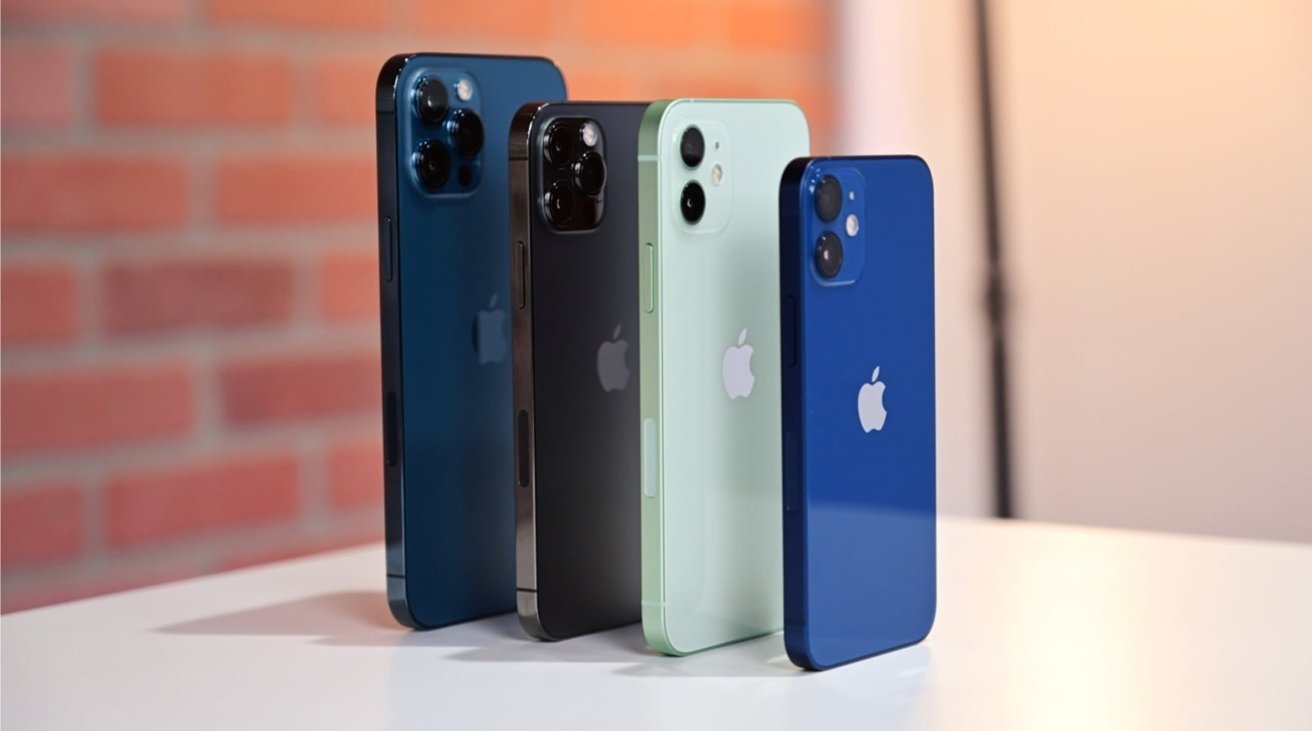France iPhone 12 ban over RF power induces Belgium to ask questions too
Belgium has joined the list of countries reviewing potential health risks associated with iPhone 12 radio power levels, following concerns expressed by French regulators.

iPhone 12 family from mini to Pro Max
On Tuesday, France banned the sale of iPhone 12 due to exceeding legal radio frequency exposure limits. Regulators are now poised to order a total recall of all iPhone 12 models in circulation should Apple not respond.
The move has prompted Belgium to review the iPhone 12 over health and safety concerns.
"It is my duty to make sure all citizens ... are safe", Mathieu Michel, Belgium's state secretary for digitalisation, said in a statement emailed to Reuters.
Other countries, like Italy and Germany, have said they would monitor the situation as it progresses but have not pledged to take any action.
It is important to understand that radio frequency (RF) radiation differs from ionizing radiation produced by radioactive isotopes or the sun. The way in which they cause harm is also different. Ionizing radiation damages molecular bonds inside cells leading to damage, while high levels of RF radiation can heat tissue and potentially cause tissue damage.
Radiation exposure is measured differently by different countries, using units such as gray, sieverts, or rem per hour. However, the Specific Absorption Rate (SAR) is a more universal measure.
SAR refers to the rate at which the body absorbs RF energy, which generates heat but doesn't necessarily indicate the extent of damage caused. It's not clear at what levels RF exposure can cause damage, and there is no scientific evidence that 10x levels of RF that a cellphone can generate -- even 10x France's results for the iPhone 12 -- causes any adverse health effects
Apple has denied allegations from the French ministry that the iPhone 12 exceeds legal limits for RF exposure. The company intends to challenge the sales ban and is also disputing the results of the AFNR testing.
Apple will maintain communication with the agency and work towards a resolution to ensure the model is not recalled in total.
Read on AppleInsider

Comments
Ionizing radiation includes alpha and beta particles as well as gamma rays. RF is just low frequency radio waves that can be absorbed and converted to heat.
—Ionizing radiation has enough concentrated energy to break tiny things, such as the DNA in a cell. That can jumpstart a cancer. In physics the distinction between particles and waves is murky, but ionizing radiation behaves more like a particle and thus like a bullet fired from a gun. Just keep in mind that like a bullet the harm done done depends on where a particle hits. Most of the time getting an x-ray is not going to give you cancer. It doesn't hit where it damages a cell's DNA. And even then the risk is selective. For I time I cared for children getting early bone-marrow transplants. The dose they received was lethal, but it was lethal because it primarily killed their blood cells, which in their case had cancer. The bone marrow from a matched donor was then transfused in, allowing them to recover. So even massive doses of radiation only kill in certain ways.
—The energy in a radio transmission is more spread out and thus concentrates less energy at any specific point. It can warm food in a microwave oven but in can't break down DNA. And the warmth you get from a watt or so of energy from an iPhone is quite slight, less than you'd get standing bareheaded in the sun. For cell phones, the waves are a few inches in length. That spreads out their energy, making it for all we know harmless. The limits for cell phones are arbitrary. People regularly work around radio power levels that are far higher without harm. I have worked around military radars ranging from four megawatts (S band) to ten megawatts (C band). That was years ago and I've yet to grow a second head.
A good illustration of that harmless of radio energy are the Chain Home radars the British used during WWII. To give the radars enough range, they used about the most energy that could be generated at the time, some 200,000 watts. The antennas did little to focus that energy other than send it toward the skies over France. That meant those working nearby on the radars received a incredible amount of radio energy. Friends suggested they might not be able to had kids. Someone I read who'd worked at a Chain Home station said that wasn't so, that after the war she and her fellow workers had lots of normal children.
This regulatory hysteria makes me glad I'm not living in France or Belgium. If my iPhone 12 Pro Max radiates a bit more power, then good. I'll get more range.